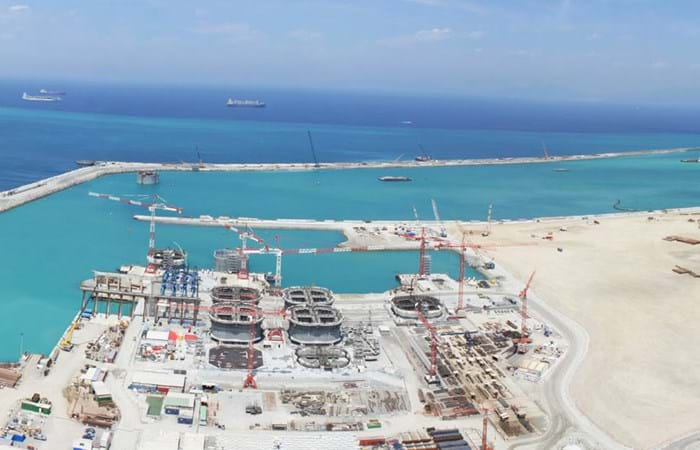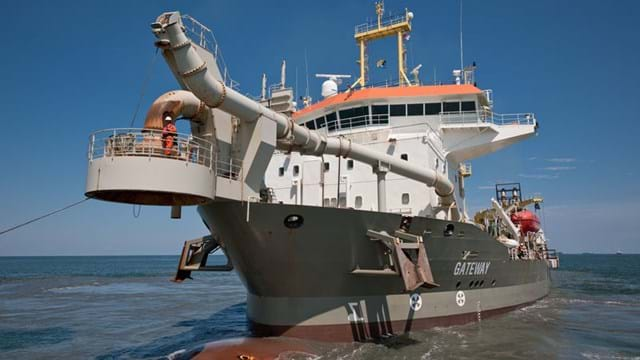Tanger-Med is a cargo and passenger port located about 40 km east of Tangiers, Morocco, on the Straits of Gibraltar at the crossing of two major maritime routes only 15 km from the European mainland.
The port consists of the Tanger Med 1 terminal, which went into service in 2007, a ferry terminal (2009), and the Tanger Med 2 port, which has been under construction since March 2010 and is scheduled to be completed by 2015/2016. At full capacity, the port is expected to handle 8 million containers, 7 million passengers, 700,000 trucks, 2 million vehicles, and 10 million MT of oil products. The Tanger Med 2 extension project was implemented, coordinated and managed by TMSA, a private company with public prerogatives operating under an agreement with the Moroccan State and interacting with the different ministries involved. The Tanger Med 2 port facilities will eventually include two new container terminals with a total length of 2,800 m and an additional nominal capacity of 5 million containers. The first phase is currently nearing completion, with the breakwaters and 1,200 m of quay wall in place. The expansion works for Tanger Med 2 are being executed by a consortium consisting of BSTM (BESIX-SOMAGEC) and TMBYS. In this consortium, BSTM is responsible for the quay and future storage areas and TMBYS is building the breakwaters. Boskalis International worked as a subcontractor for BSTM.

